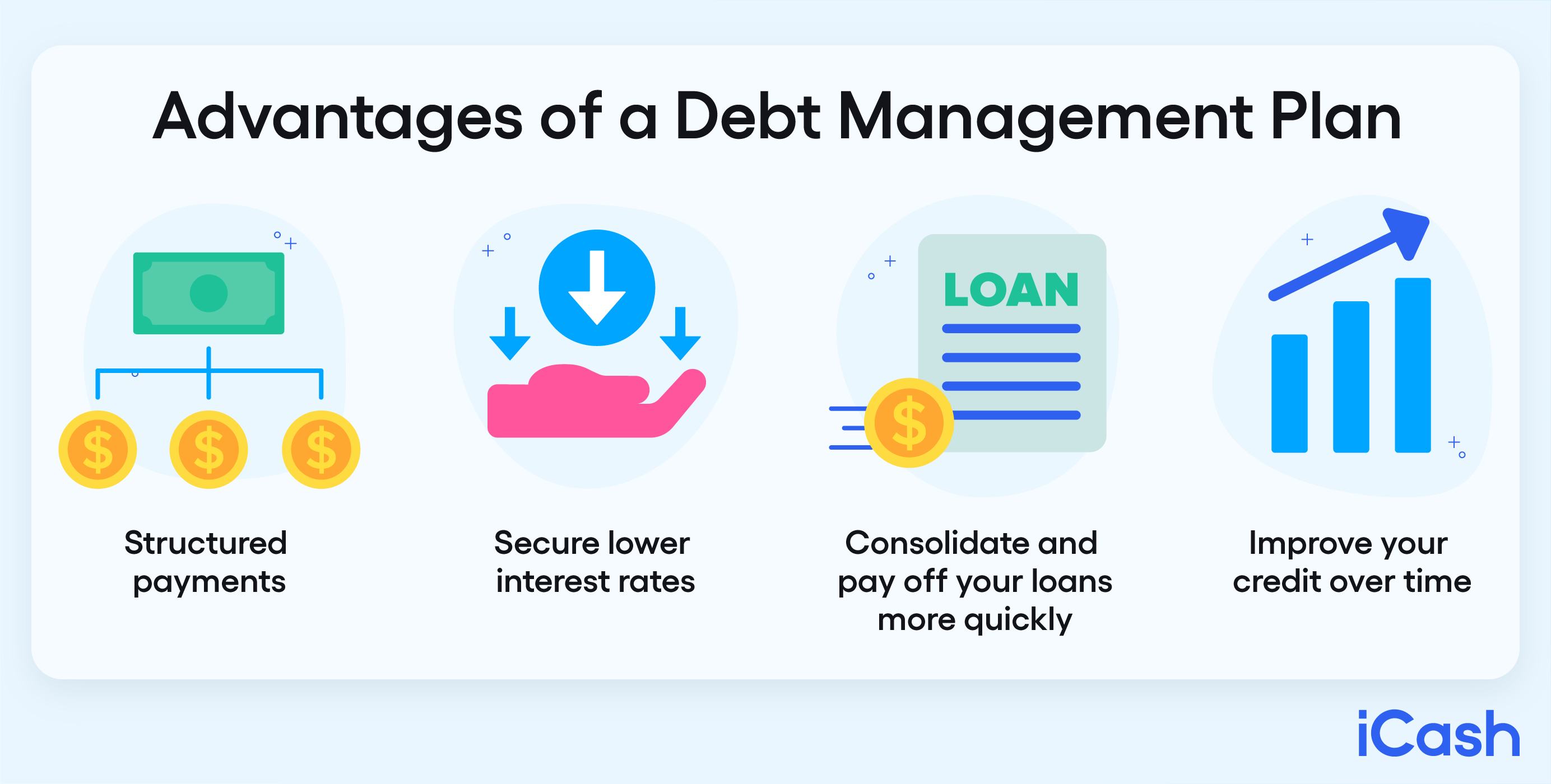Contrasting Financial Debt Consolidation Options: More Discussion Posted Here
Contrasting Financial Debt Consolidation Options: More Discussion Posted Here
Blog Article
Everything You Required to Find Out About Producing a Customized Financial Debt Monitoring Plan
In the world of personal money, creating a customized financial obligation monitoring strategy is often the foundation of achieving monetary stability and comfort. By diligently reviewing your current financial obligations, establishing possible financial goals, and crafting a sensible budget plan, you lead the way for efficient financial obligation repayment strategies. However, the trip to economic flexibility is not entirely about preliminary preparation; it additionally needs continuous tracking and modifications to make sure ongoing progress. As you navigate the intricacies of producing a customized financial obligation administration plan, understanding the ins and outs of each step is key to your monetary success.
Examining Your Current Financial Obligation Circumstance
One must first carry out an extensive assessment of their present debt responsibilities prior to developing an efficient financial obligation administration strategy. Develop a thorough listing of each financial obligation, including the complete quantity owed, rate of interest prices, minimal monthly settlements, and due days.
After assembling this information, compute your total debt-to-income ratio by separating your regular monthly debt settlements by your regular monthly revenue. Recognizing these elements of your financial circumstance will certainly direct you in establishing a personalized debt administration plan tailored to your specific needs and objectives.
Setting Financial Goals and Targets

When establishing monetary objectives, it is necessary to be certain, quantifiable, possible, appropriate, and time-bound (SMART) As an example, you might establish a goal to repay a particular quantity of financial debt within a specific amount of time, such as reducing your charge card balance by $5,000 in the following one year - More Discussion Posted Here. By setting clear targets like this, you can track your progression and stay motivated to accomplish your debt administration purposes
Additionally, take into consideration prioritizing your financial obligations based upon aspects such as rate of interest, outstanding balances, and repayment terms. By concentrating on high-interest debts first, you can conserve cash in the future and accelerate your trip towards monetary freedom. Remember, everyone's monetary circumstance is unique, so tailor your goals and targets to fit your private demands and situations.
Creating a Realistic Spending Plan
Crafting a distinct budget plan is a fundamental action in reliable financial debt administration and monetary planning. A practical budget offers as a roadmap for your economic wellness, assisting you track your income, expenditures, and debt settlements. To create a practical spending plan, beginning by listing all your sources of revenue.
Regularly testimonial and change your budget plan as required to remain on track with your financial objectives and financial debt payment strategy. By sticking to a sensible budget plan, you can efficiently manage your financial obligation and work in the direction of a much more protected economic future.
Discovering Debt Repayment Techniques
After establishing a realistic budget plan, the next critical action in effective financial obligation management is to check out numerous debt repayment techniques. One usual strategy is the snowball method, where you focus on settling the tiniest debts initially while making these details minimal payments on bigger debts. This technique can aid develop momentum as you see smaller sized debts being cleared, offering motivation to tackle bigger ones.
Another method is the avalanche approach, which includes focusing on financial obligations with the greatest rates of interest. By targeting high-interest financial obligations initially, you can reduce the general quantity you pay in interest gradually. This approach may be a lot more cost-efficient in the lengthy run, despite the fact that it might take longer to see private financial debts totally paid off.
Financial obligation loan consolidation is another alternative where you integrate numerous financial debts right into a solitary finance with a lower rate of interest. This can streamline your settlement procedure and potentially decrease the total interest paid. However, it's vital to meticulously think about the terms and fees related to debt consolidation to ensure it's the appropriate option for your financial circumstance.
Monitoring and Readjusting Your Strategy

Readjusting your plan may include reallocating funds to deal with high-interest financial debts initially, bargaining with view website creditors for lower rate of interest or far better payment terms, or exploring additional earnings resources to expedite debt payment. As your financial scenario advances, your financial obligation management plan ought to adapt appropriately to remain efficient. By staying aggressive and flexible in monitoring and readjusting your strategy, you can enhance your initiatives towards settling your financial obligations effectively and accomplishing your economic goals.
Final Thought
In final thought, developing an individualized financial obligation management strategy includes examining current financial debt, setting monetary objectives, producing a practical budget, checking out repayment techniques, and useful link surveillance and changing the plan as required. By adhering to these actions, people can take control of their economic situation and job towards coming to be debt-free. It is very important to stay disciplined and devoted to the strategy in order to achieve lasting monetary security.
One must initially perform a thorough evaluation of their existing financial obligation commitments before creating an efficient debt administration plan.After establishing a sensible budget, the next crucial step in effective financial obligation management is to check out numerous financial obligation settlement techniques - More Discussion Posted Here.To effectively handle your financial debt, continual monitoring and modification of your debt administration strategy are important components for long-term monetary security.Changing your plan might entail reapportioning funds to tackle high-interest financial obligations initially, working out with lenders for lower passion rates or much better payment terms, or discovering added revenue resources to expedite financial obligation settlement.In conclusion, producing a customized financial debt administration plan entails assessing existing financial debt, establishing monetary goals, developing a reasonable budget plan, checking out payment approaches, and tracking and readjusting the strategy as needed
Report this page